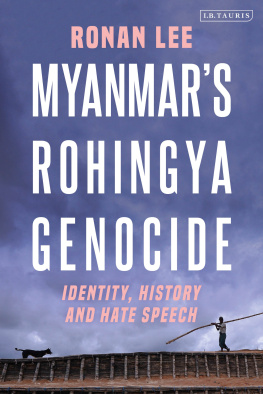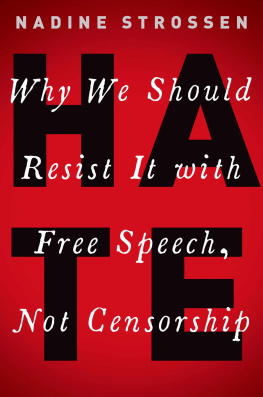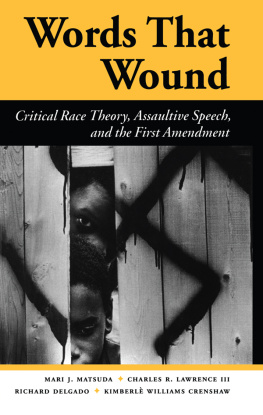1
Introduction
Myungkoo Kang
There is an East Asian proverb, Just like mushrooms sprouting after the rain, Just as the poisonous mushrooms sprouting in the forest shortly after the rain, populism and hate speech have been sprouting all over the world. For the last 30 years, populism has been a mechanism of discourse that has encouraged globalization and neoliberal capitalism at the worldwide level. Along with this, hate speech has provided fertile soil for those who have been marginalized and otherized by neoliberal capitalism to victimize others and instigate the hatred within and between different groups. If neoliberal capitalism and populism are the moist soil after rain, hate speech is a poisonous mushroom that feeds on the moisture in the forest
A poisonous mushroom does not mark itself as poisonous. To lure its prey, it boasts of more beautiful colours and forms than any other beneficial mushroom does. While many herbivores are aware of the dangers of the poisonous mushroom and avoid it, young animals and some hungry ones become fatally ill from eating it. Most animals get to know the danger of poisonous mushrooms through learning (from their parents) and experiences (of friends death and suffering). Perhaps it took several centuries for the animals to distinguish between poisonous and beneficial mushrooms.
Likewise, hate speech does not always reveal itself in the form of obvious hatred. In fact, hate is considered an important mechanism that protects ones identity or realm from the other. Hate has served as a significant mechanism to counter threats that disturb the system of identity and violate its boundaries, thereby contributing to sustain the community. However, it leads to alienation of the other, destruction of humanity and demoralization of the society (Kristeva, 1982; Nussbaum, 2004). In a global networked era where boundaries become indistinct and social uncertainty increases, hate is quite easily and negatively mobilized under the pretext that the conventional system should be protected. And hate speech manifests itself as beneficial mushrooms by conciliating people, resorting to conservative values systems, creating fake news and monsterizing the other.
With the recognition of the substantial growth of hate speech in Asia and Europe and its growing devastating effects, this volume collects various cases on different subjects who produce hate speech and those who are victimized and suffered from it. In particular, since there were not many reflections nor empirical data on to what extent and in what forms the poisonous mushrooms of hate speech are grown, we have attempted to look into concrete cases on hate speech in each country, the policy approach to regulate and incapacitate it and cultural resistance against it. In the case of Europe, many pieces of research have been accumulated on the hate speech phenomenon and its regulation debate in various countries, but there have been few opportunities to gather those researches in one place. Furthermore, there has been no attempt on a comparative approach to Asia and Europe.
As can be seen from each chapter in this volume, a significant trend in hate speech studies is towards case studies on specific hate speech incidents, its progress and effects. Both in Asia and Europe, hate speech concerning race, religion, gender, ethnicity and sexuality is becoming a social problem. The second trend is the analysis of different institutional, political, legal, ethical and philosophical perspectives on how to regulate hate speech in various countries. There have been abundant researches that explicate and compare the philosophy and judicial precedents regarding hate speech regulation in North America and Europe. This volume aims to provide a comparative point of view on Asian and European cases, if not to make an accurate comparison between them. Thirdly, what is noticeable in the researches included in this volume is that online hate speech and its regulation is an important issue that calls for scholarly attention. It brings up the longstanding debate on regulation and freedom of speech and places in the online context.
In Asia, research on hate speech is now at the beginning stage while European researches turn their attention to newly developing phenomenon such as online hate speech and hate speech based on ethnicities or religions that are manifested from terrorism and refugees. With the publication of this volume, we would like to share various hate speech cases in different Asian and European countries and elucidate the historical, cultural and socio-psychological soil on which hate speech grows just as poisonous mushrooms sprouting after rain.
Our contributors delve into each countries hate speech cases and question the mechanisms of these destructive behaviours and speeches. Japanese society, with the rising of ultra-nationalist groups, is witnessing the hate speech against Zainichi Koreans, and Korean society is suffering from hate speech targeting women, migrants and sexual minorities. European societies are facing extreme Islamophobic attitudes after a series of terrorism and refugee issues. The academic approach to interpret these phenomena is rooted in the critical anger regarding the current state.
Along with the critical anger, the chapters provide rational assessments on each hate speech incident and claim that to prevent hate speech, it is never enough to merely criticize certain individuals or groups that utter it. Each chapter clearly presents or alludes to its own answer on how to counter hate speech. Through the different cases in Asia and Europe, each chapter questions why such destructive behaviours are expressed and why hate speech perpetrators manifest their hatred against others without any sense of guilt and without any reflection on the destructive effect triggered by their speech. All the questions and discussions in each chapter show the future direction of hate speech studies.
And we will find out that the future direction for hate speech studies does not necessarily mean support for freedom of speech or strict regulation on hate speech. Its when we give more critical attention to other important values such as human rights and dignity, care, tolerance, respect and recognition and discuss these keywords in terms of their philosophical and institutional base which will be explored in our next forthcoming volume that we can shake off the fetters of hate speech. These keywords lead us to the accumulated philosophical discussion on ethical and moral attitude to recognize and respect the difference of skin colour, religious belief and sexuality. These keywords can work as attitudes or dispositions on the individual level, as normative principles on the ethical level and as collective practices and institutional regime on the societal level, just as human rights have progressed. These keywords always need to be well considered when criticizing hate speech and discussing regulation tactics.
This volume consists of two sections. The first half aims to examine the current state of hate speech in Korea, Japan and France. Myungkoo Kang, Jaejin Lee and Sojeong Park provide us the contour of hate speech studies in South Korea. Their meta-analytical view shows that Korean hate speech studies is recently growing both in quantity and thematic diversity. Other chapters explore through the case studies how hate speech is produced in particular social contexts. Hyojin Jeong and Younghan Cho examine the construction of misogynistic discourse in South Korea. What is notable in their perspective is that they aim to illuminate routine, prosaic, dull and unremarkable aspects of hate speech against women, which they refer to as banal misogyny, The chapter provides critical insight on how the habitual representation of media victimizes the women. On the other hand, in Jackie Kim-Wachutkas chapter, women are not merely positioned as the victims of hate speech. She gives much attention to the Japanese women who openly perform hate speech against social minorities in the name of love of country and how these women gain legitimate empowerment through their performance. With the intersectional approach, the chapter clarifies the intricate connection of gender, race and nation in the realm of hate speech.





![Communist Party of PeruCommunist Party of Peru - Shining - The Collected Works of the Communist Party of Peru. 1968-1999 [Warning: Hate Speech and Negationism]](/uploads/posts/book/267146/thumbs/communist-party-of-perucommunist-party-of-peru.jpg)




